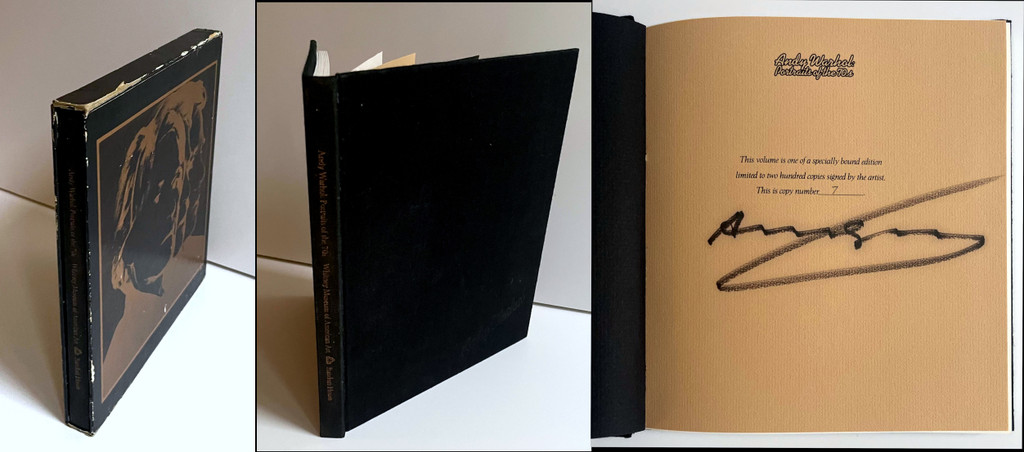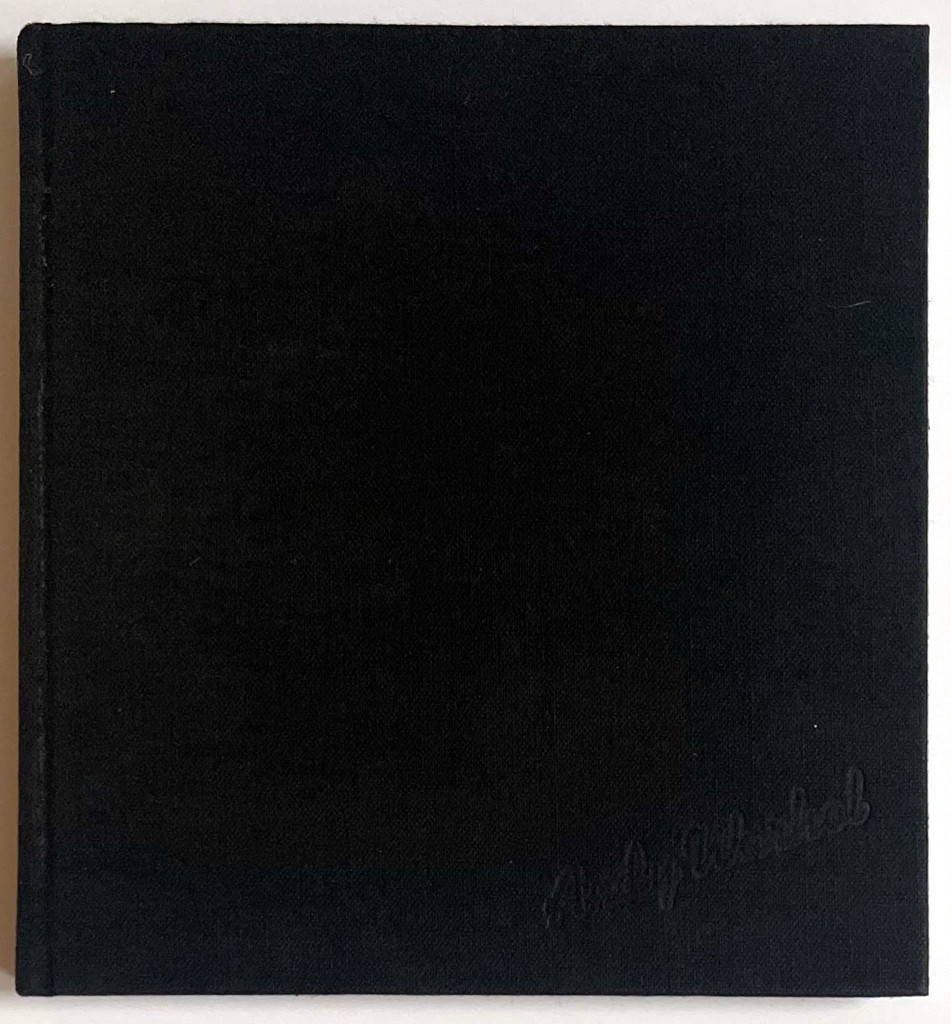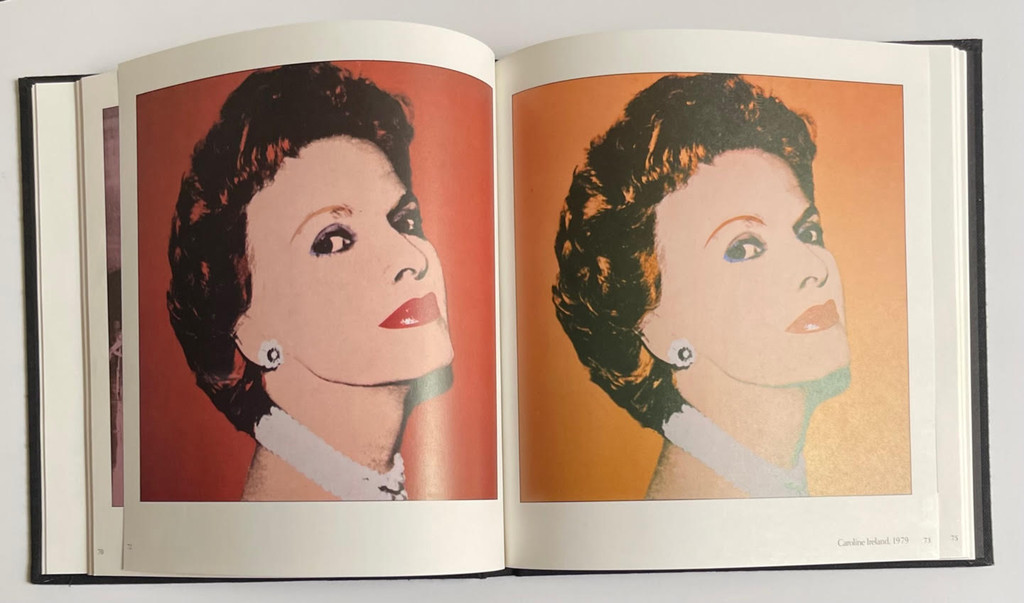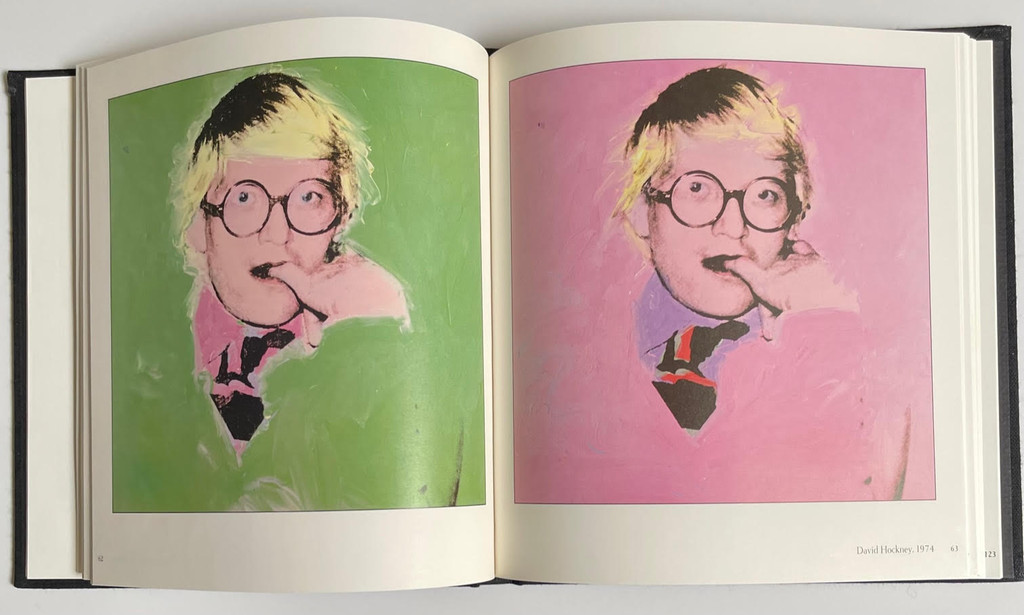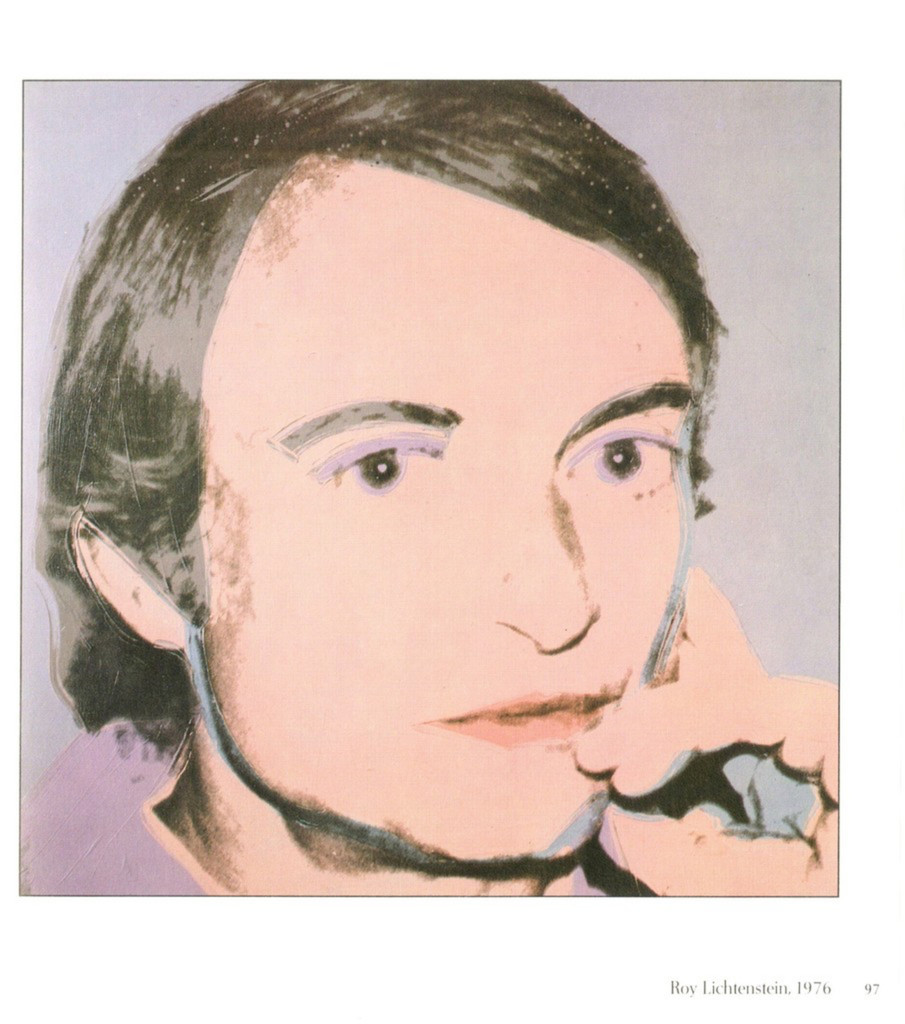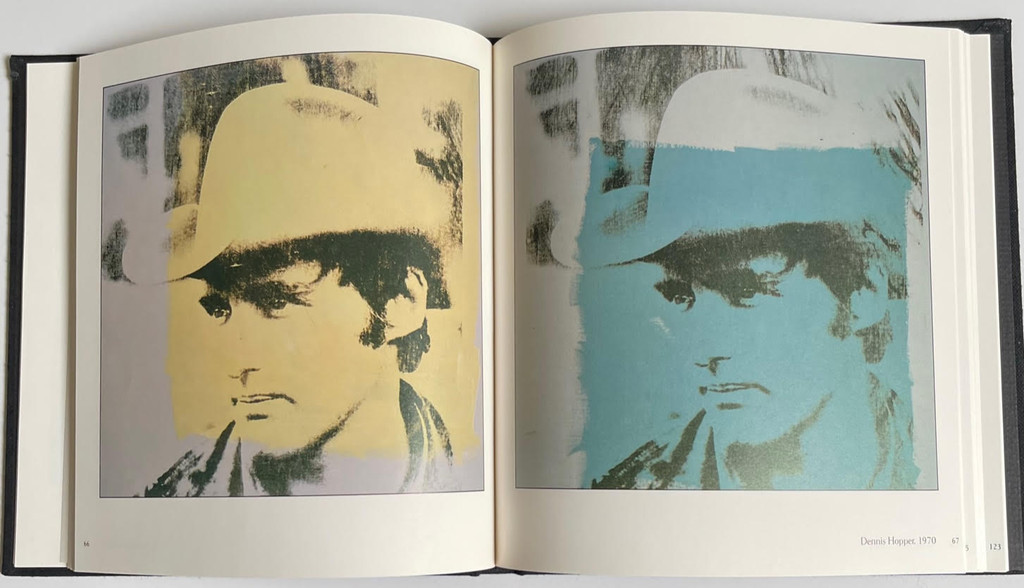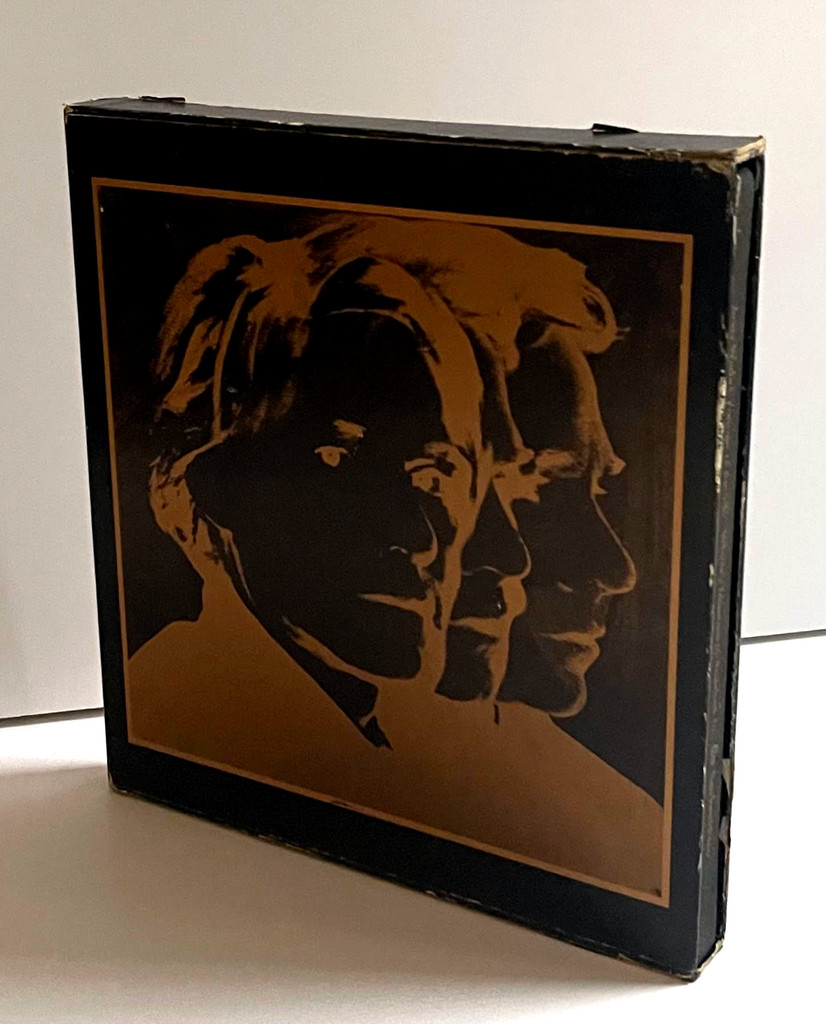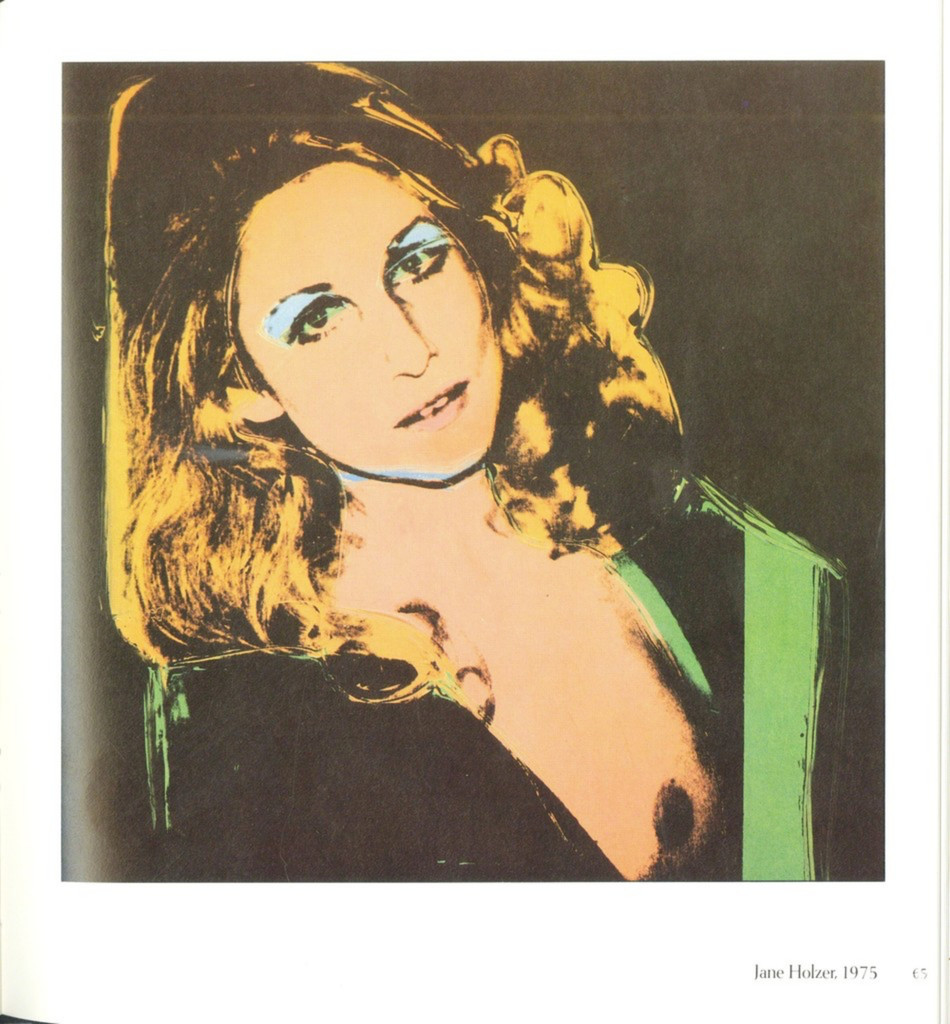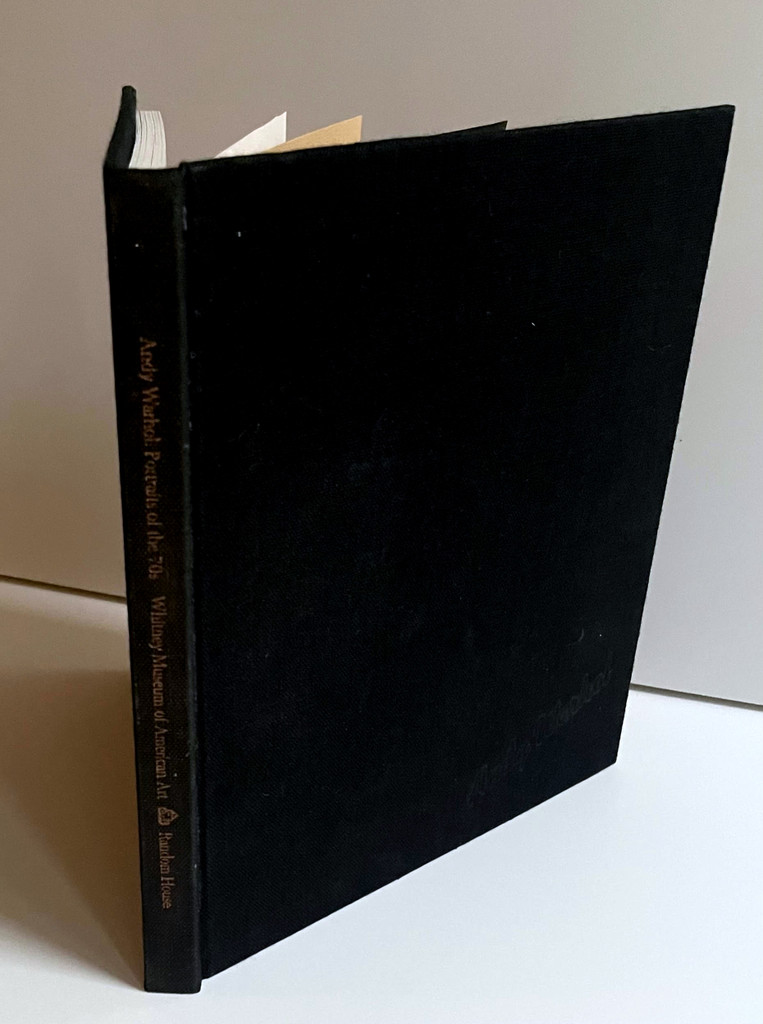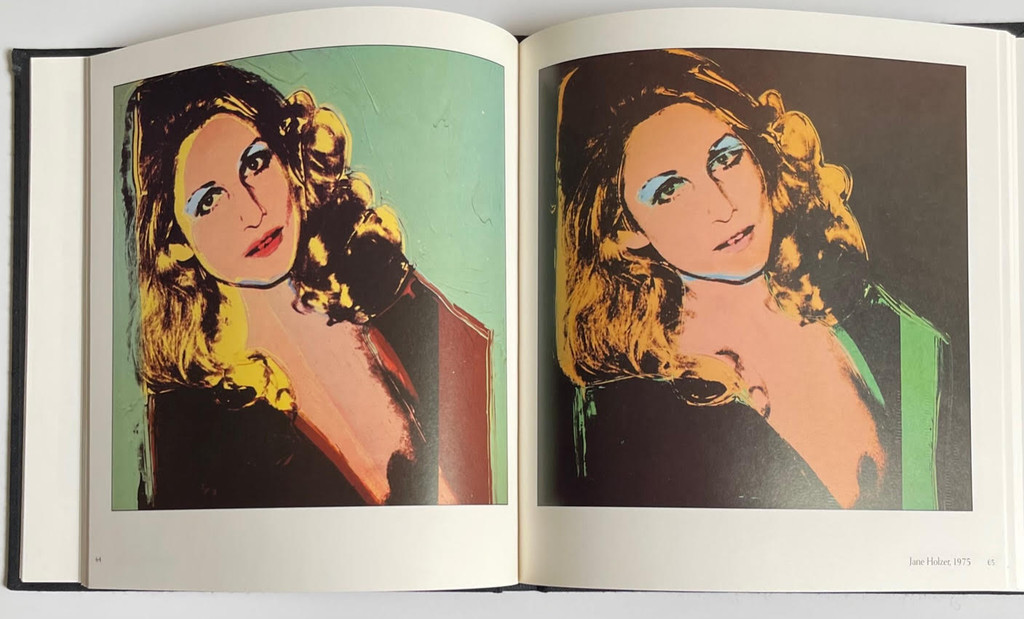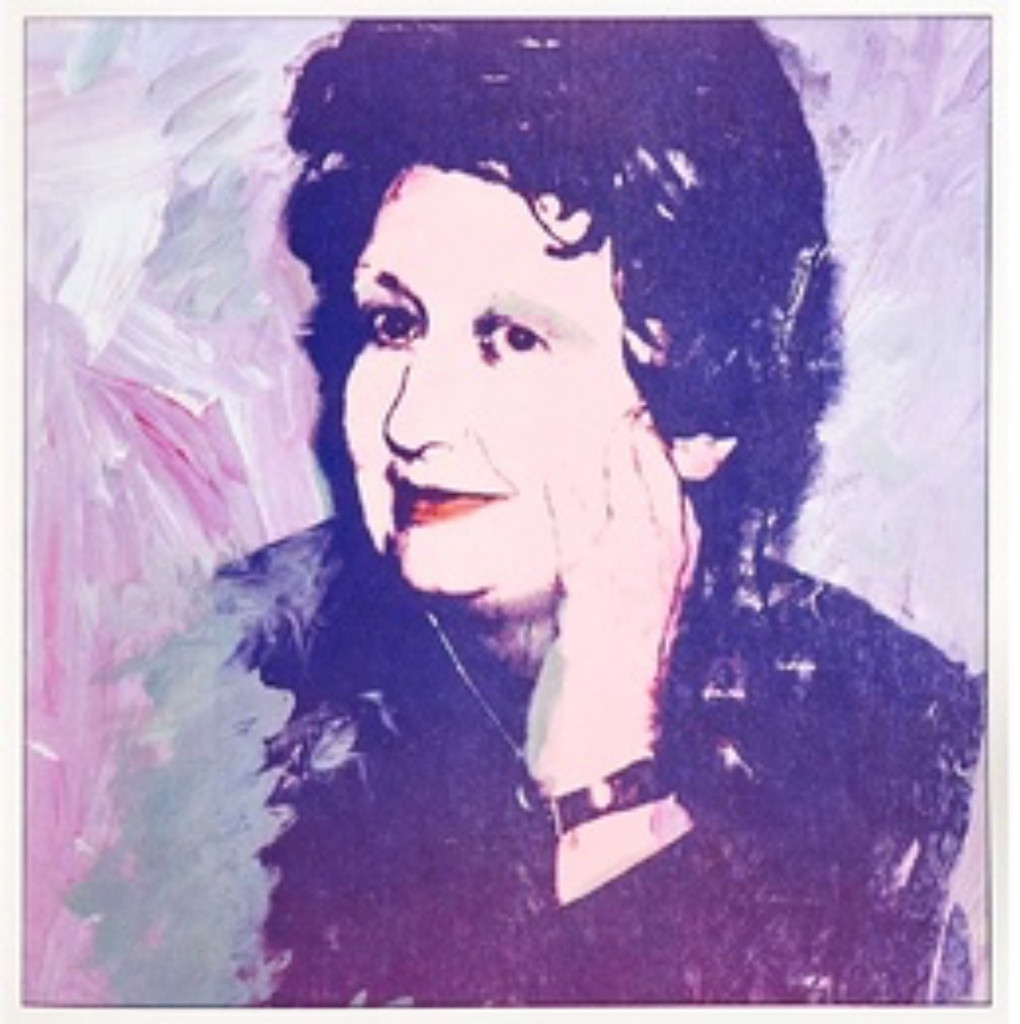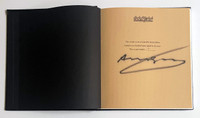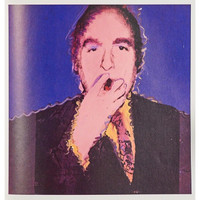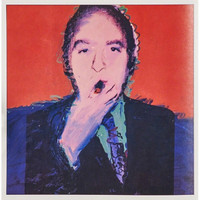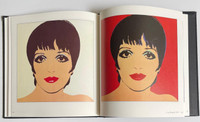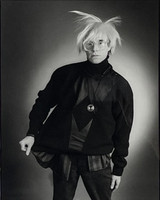
An Educated Collector is Our Best Client
In business for nearly two decades, we are a well established, popular contemporary art boutique specializing in expertly chosen, blue chip prints, multiples, uniques, books, ephemera and merchandise at different price points, with a focus on the secondary market. Please click on the "Contact Us" button at the bottom of this page for questions about any work, pricing and/or to arrange to visit our showroom/gallery - located in between Manhattan's Flatiron and Chelsea Flower Districts.
Andy Warhol, Portraits of the 1970s (Deluxe Edition Monograph with Slipcase, Hand Signed and Numbered by Warhol), 1979
CONTACT GALLERY FOR PRICE
Description
Andy Warhol
Portraits of the 1970s (Deluxe Edition Monograph with Slipcase, Hand Signed and Numbered by Warhol), 1979
Hand Signed and Numbered Hardback Monograph with 120 Bound offset lithographs and text, held in original slipcase (boxed set).
Boldly signed by Andy Warhol and numbered 7, from the edition of 200 on the colophon page.
9 1/2 × 8 1/2 × 2 inches
Unframed
Provenance
The original (uptown) Whitney Museum
An amazing and historic gift! As dazzling as the Warhol show was in 2019 at the new Whitney Museum -- only his show in the late 1970s at the old Whitney Museum, could offer this Deluxe limited edition collectors item - hand signed and numbered by Andy Warhol - because the latter was published during his lifetime. This rare 1979 First (and only) Edition hardback monograph is held in the original slipcase, and is hand signed by Andy Warhol and numbered 108 out of only 200 on the first front end page (see image). This collectors item features text, accompanied by 120 full page color offset lithograph bound, double sided plates on regular pages. (Total pages are: 145) It was published by the Whitney Museum in collaboration with Random House, in conjunction with the exhibition held at the Whitney Museum of American Art, November 20, 1979 to January 27, 1980. Text foreword is by Tom Armstrong, the Whitney's director. Total pages are: 145. The Warhol portraits included are: Giovanni Agnelli, Marella Agnelli, Corice Arman, Marian Block, Irving Blum, Truman Capote, Cristina Caramati, Leo Castelli, Carol Coleman, Norman Fisher, Kay Fortson, Tina Freeman, Diane Von Furstenberg, Henry Geldzahler, Halston, Brooke Hayward, Barbara Heizer, Michael Heizer, Carolina Herrera, David Hockney, Baby Jane Holzer, Dennis Hopper, Victor Hugo, Alexander Iolas, Caroline Ireland, Charles Ireland, Mick Jagger, Paul Jenkins, Katie Jones, Ivan Karp, Marilyn Karp, Evelyn Kuhn, Jane Lang, Francis Lewis, Sydney Lewis, Dorothy Lichtenstein, Roy Lichtenstein, Daryl Lillie, Joe MacDonald, Erich Marx, Golda Meir, Liza Minnelli, Lynda Palevsky, Kimiko Powers, John Richardson, Helene Rochas, Yves Saint Laurent, Sao Schlumberger, Gale Smith, Ileana Sonnabend, Sofu Teshigahara, Janet Villela, Doda Voridis, Frederick Weisman, Marcia Weisman, Jamie Wyeth.
Portraits of the 70's, 1979
Color plates bound in book in original box
Signed and numbered 108/200
9 1/2" x 8 5/8" (closed book)
Book information:;
Publisher: Random House in association with the Whitney Museum of American Art, New York, 1979
English; Hardcover; 145 pgs with color and bw illustration
About Andy Warhol:
Isn’t life a series of images that change as they repeat themselves?
—Andy Warhol
Andy Warhol’s (1928–1987) art encapsulates the 1960s through the 1980s in New York. By imitating the familiar aesthetics of mass media, advertising, and celebrity culture, Warhol blurred the boundaries between his work and the world that inspired it, producing images that have become as pervasive as their sources.
Warhol grew up in a working-class suburb of Pittsburgh. His parents were Slovak immigrants, and he was the only member of his family to attend college. He entered the Carnegie Institute of Technology (now Carnegie Mellon University) in 1945, where he majored in pictorial design. After graduation, he moved to New York with fellow student Philip Pearlstein and found steady work as a commercial illustrator at several magazines, including Vogue, Harper’s Bazaar, and the New Yorker. Throughout the 1950s Warhol enjoyed a successful career as a commercial artist, winning several commendations from the Art Directors Club and the American Institute of Graphic Arts. He had his first solo exhibition at the Hugo Gallery in 1952, showing drawings based on the writings of Truman Capote; three years later his work was included in a group show at the Museum of Modern Art for the first time.
The year 1960 marked a turning point in Warhol’s prolific career. He painted his first works based on comics and advertisements, enlarging and transferring the source images onto canvas using a projector. In 1961 Warhol showed these hand-painted works, including Little King (1961) and Saturday’s Popeye (1961), in a window display at the department store Bonwit Teller; in 1962 he painted his famous Campbell’s Soup Cans, thirty-two separate canvases, each depicting a canned soup of a different flavor. Soon after, Warhol began to borrow not only the subject matter of printed media, but the technology as well. Incorporating the silkscreen technique, he created grids of stamps, Coca-Cola bottles, shipping and handling labels, dollar bills, coffee labels, and more, breaking down the images to their basic graphic components.
In 1963 Warhol established a studio on East 47th Street, which became known as the Factory and served as a cultural hub for artists, models, performers, and socialites. His inner circle comprised his Superstars, who played a major role in both his work and his social life. Interested in the production of fame, Warhol began to screen-print images of celebrities and public figures, from Marilyn Monroe and Elvis Presley to Jackie Kennedy and Mao Zedong. Expanding his practice, as well as his cultural influence, he produced records (The Velvet Underground & Nico), started a magazine (Interview), and made avant-garde films, such as Chelsea Girls (1966), Blow Job (1964), and Empire (1964), which have become classics of the underground genre.
Following a close run-in with death when Valerie Solanas shot him in 1968, Warhol entered a more subdued, isolated period, working primarily on a commissioned basis and painting portraits for various patrons, while also revisiting themes from his earlier work. He then began to pursue a new interest in abstraction, first with his Oxidations (1977–78), made by allowing friends and acquaintances to urinate on canvases painted with metallic pigments, and later with his Rorschach (1984) and Camouflage (1986) paintings.
By the early 1980s Warhol was producing work across media with a renewed vigor, hosting half-hour programs on MTV, publishing books, and collaborating with younger artists including Jean-Michel Basquiat, Francesco Clemente, and Keith Haring. His abstract series coincided with large-scale works that looked back at masterpieces by Leonardo da Vinci: he screen-printed images of the Mona Lisa (1503) and created several monumental canvases of The Last Supper (1495–98). Warhol’s ability to seamlessly combine art historical reference, abstract patterns, and mass media set new standards for the role of the artist, permanently blurring the lines between commercial and fine art.
Courtesy of Gagosian Gallery


